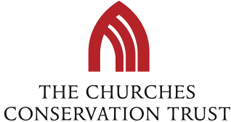Chapel Tour
The Chapel provides a number of resources this help you make the most of your visit. These include audio-visual presentations, information boards, and childrens’ puzzles.
Below we have provided additional information to help guide you as you walk around the Chapel. First of all, here are two questions which most visitors ask, together with the answers.
Why is St Nicholas’ referred to as a ‘chapel’, despite its size and obvious importance as a place of worship?
This is because St Nicholas’ does not serve its own Parish, but is subject to the Parish Church at St Margaret’s Priory (in Saturday Market Place), and had the same legal status as a side chapel in that building.
How old is St Nicholas’?
The tower was built around 1225 although everything else was rebuilt in the period 1380-1410, and as such the building is very early Perpendicular architecture. St Nicholas’ is now one of some 350 English redundant churches in the care of the Churches Conservation Trust.
Start your tour outside the West entrance
This is on your left as you walk from the West doors. It is a rare survival as refitted in 1617. Started in Protestant Lynn by the 1560s to deal with the moral failings of the clergy and parishioners’ (even before the Puritan period). The Vestry (a forerunner of Parish Councils) later met here.
The roof
This is a very early “Angel roof” where 24 angels fly on hammer beams above each of the top windows. 40% are holding musical instruments, and the remainder hold religious symbols. A heavenly host, looking after us on Earth, and constructed from oak. Click to find out more about the Angels . There are also excellent photographs of the angels in the Gallery section of this web site.
Ledger stones are the flat stones placed over a grave inside a church, usually incised with the name and dates of the deceased. In the centre aisle beside the font are a series of ledger stones with this name Cruso.
One of those buried was called Robinson. Cruso was a local name but these children and adults died long after 1719 when the castaway’s story was published. Only the Cathedral of Bath Abbey has more ‘ledger stones’ than St Nicholas’ Chapel.
Now walk up the centre aisle
A sword rest can be seen on a pillar, dated 1743-60. It was made to hold the town’s ‘King John Sword’ when the Mayor came to official services. MTS means Mayor Thomas Somersby, who was elected mayor on each of these two dates. The length of the date scroll suggests that this was made and presented during his second mayoralty, in 1760-61.
Similar rests can be seen in St Margaret’s and All Saints churches.
Go left to the lectern, and then towards the altar
This was designed by architect Robert Adam as a memorial to Sir Benjamin Keene who died in 1757 in Madrid. He was a Lynn man who had been the British Consul and Ambassador to Portugal and Spain. You can see the Lisbon quayside scene and badge of the Order of the Bath carved into the urn.
Above the high altar is the only area of painted roof, and two angels without wings, who are assisting at the Mass service below and holding a book and a pax. In the area of the high altar area, are old pews (‘desks’) which are the last of the original medieval woodwork. On their fronts are mythical beasts such as a yale, a gryphon, and their version of a lion. In the tall ‘poppyheads’ look for a monkey on a cow, a hermit in a shell, and the Virgin Mary on a crescent.
On the walls here are a series of 17th century merchants’ monuments. Imagine how important the Snelling, Clarck and Greene families felt they were, with their children lined up! However the next monument, commemorating the Browne family, is an elegant tablet of 1784 showing just a weeping willow tree.
Depart by the South porch doors
The thick doors are exquisitely decorated, and take time to view the real characters on the stone heads in the porch. Outside is a stunning array of carving. If you would like more in-depth information about this area choose the Links section from the menu and open the Graffiti Survey Record document.
Finally we hope your visit has been inspiring
There is donation box is by the reception desk. Donations go towards helping to maintain and repair this magnificent historic old building. Please assist by donating whatever you can afford. Every donation, however small is gratefully received.
Website by nsg-ltd.com ©2017
Privacy Policy | Tel 01553 774471
Email bisquefire1@googlemail.com
Facebook













